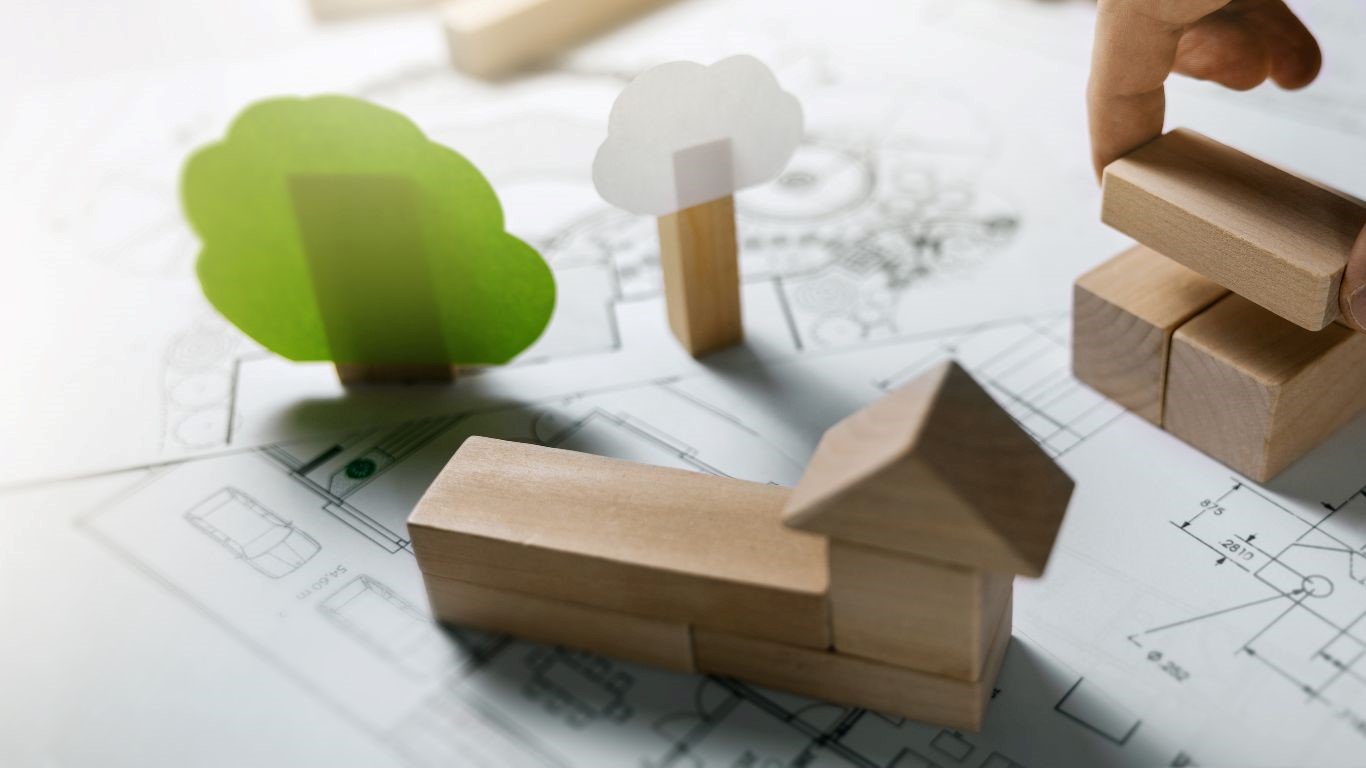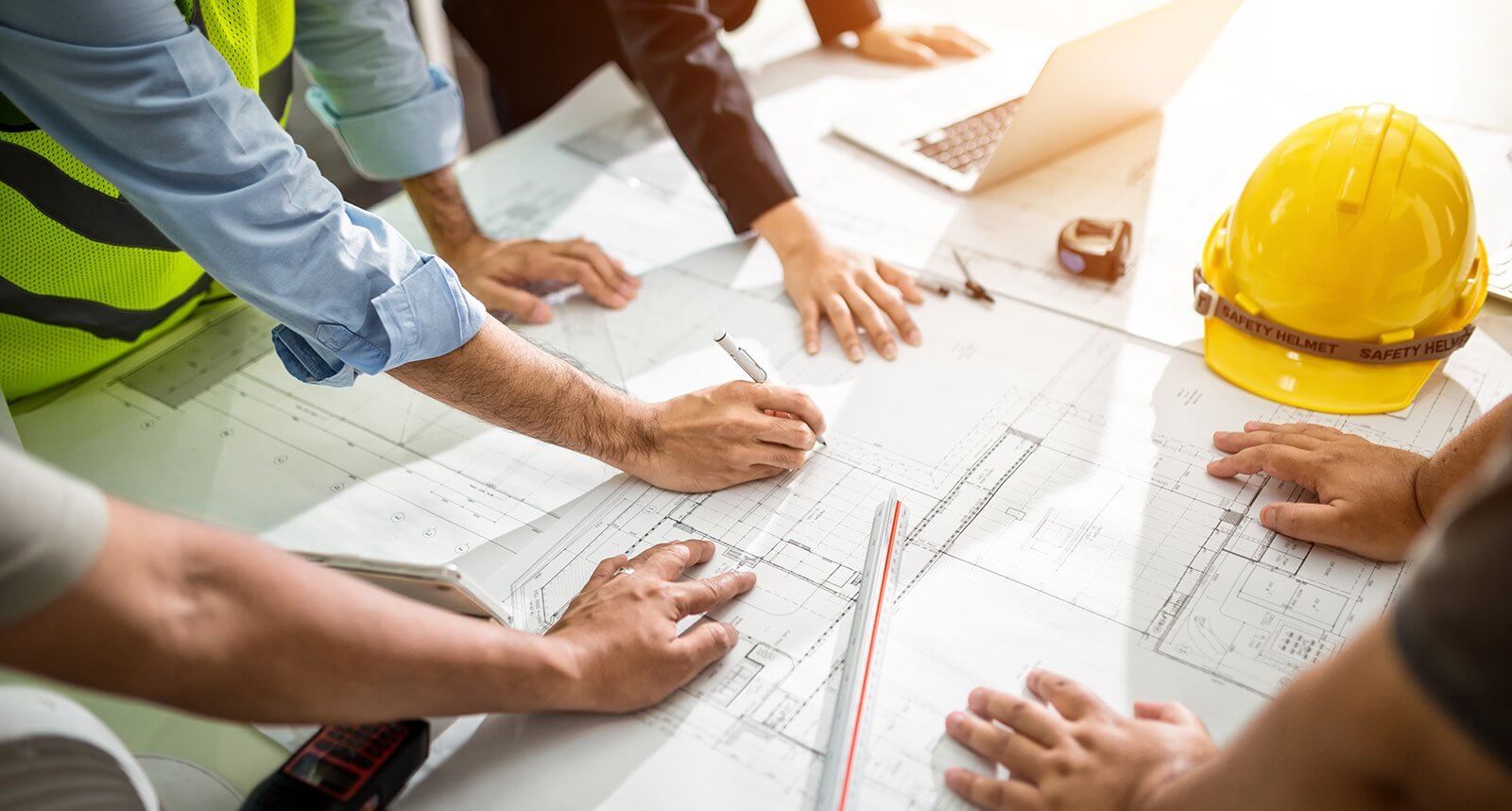Sustainable Architecture
Sustainability in architectural design and its application in decks emphasize change in designing and constructing a house. Homeowners can offset their carbon emissions considerably if they incorporate green elements in the buildings’ design and construction process and embrace new-age materials, which also help build aesthetically appealing and efficient spaces. Picture a house that reduces energy and water use responsibly yet offers good illumination and fresh air within your living space.
Imagine a new deck constructed from recycled plastic and cellulose materials that offers an aesthetically appealing outdoor living space and durability without adversely impacting the earth. This fusion of sustainable aesthetics and environmentally friendly decking brings more green friendly attributes to our homes with the prospect of today’s gain and tomorrow’s wealth.

1. The Rise of Sustainable Architecture
Green architecture completely alters the construction industry by incorporating sustainable practices and elements. This innovation dramatically minimizes the effects on the surroundings as the interior quality increases.
The sustainable architectural style uses modern technology and new-age materials like recycled timber, metal, and low-emission concrete. These materials significantly reduce emissions while providing endurance and elegance to the structures. Furthermore, sustainable architecture relies on energy-conserving systems such as geothermal air conditioning and heating systems to ensure long-term energy efficiency.
Other examples include structures with enhanced light quality in the interior, raised natural ventilation, and balanced integration with the neighborhood, to mention a few of the sustainable principles. Sustainable solutions such as green roofs and living walls conspire to boost the range of species and insulate properties that lower energy expenses.
We also need efficient water-saving technologies such as rainwater harvesting and greywater reclamation. This approach helps guarantee that sustainable living is not constrained to construction alone but that a positive change for the latter generations is instilled.
2. Eco-Friendly Decking Options: An Overview of Innovative Materials
Decking is an essential element of contemporary dwellings. In recent years, it has shifted from wooden to other green products, contributing to the drive for a lower environmental impact. Some of the most considered and eco-friendly decking choices include recycled plastic composites, bamboo, and reclaimed wood, which boast longevity, ease of maintenance, and eco-friendliness.
Recycled plastic composite decking is made from recycled plastic with wood fiber and is very durable. It does not crack or split and is unaffected by rotting splinters or insects. It is long-lasting and rarely needs repair or replacement, thereby keeping the costs of using the decking low over the life of your deck. Production also plays a vital role in reducing plastic waste, reducing environmental degradation cases.
The most striking feature of bamboo decks is that the material tends to grow faster and regrows quickly in case of damage. Due to its natural qualities to deter moisture and pests, bamboo is environmentally friendly and offers long-lasting solutions when used for outdoor applications. Bamboo can be harvested sustainably without adversely impacting the roots, thus allowing it to regenerate and be harvested repeatedly.
Reclaimed wood decking offers the benefits of using old wood, thus saving on the purchase of new timber. This option is appealing since it gives your project an aged look and historical significance. Another new material, thermally modified wood, is produced by applying heat treatment that improves the timber’s characteristics and makes it withstand various weather conditions without chemical additions.
Eco-friendly decking an environmentally sound product with added utility and practicality, which will help create living spaces now and in the future. By selecting these materials, homeowners can experience the facet of environmental conservation while pursuing a durable, attractively designed, and easy-to-maintain outdoor landscape.
3. Benefits of Sustainable Architecture
The environmental benefits of sustainable architecture include energy efficiency, better building quality, reduced cost, and sustainability. Socially, it decreases greenhouse gas emissions and waste and leads to the wise use of available natural resources. A sustainable building is a structure that utilizes an energy collecting system, renewable resources and materials, and design solutions to reduce its carbon footprint.
Green roofs, solar panels, paneling, and rainwater harvesting systems contribute to environmental sustainability. Sustainable architecture, as applied to the construction industry, plays an essential role in environmental conservation by minimizing the usage of non-renewable resources.
Some benefits include better efficiency in energy utilization and less need for frequent maintenance, hence fewer operational costs. Several energy-conserving features include high-performance insulation, energy-efficient windows, and central air conditioning and heating, which decrease the amount one spends on utilities or maintenance.
Furthermore, with the generation of green consumerism, designing and building sustainable architecture increases the value of properties and appeals to environmentally mindful buyers. Including advanced systems that track and adjust energy consumption also contributes to these economic benefits.
Overall, these make it possible for sustainable architecture to be considered for various new homeowners seeking environmental conservation as well as improved living standards.
4. Energy Efficiency in Sustainable Homes
Energy conservation remains one of the most widely implemented and recognized environmentally friendly design principles. Eco-friendly or green homes are so developed to capture natural light, reduce energy usage, and use renewable energy in the home. Proper windows, insulation, and doors regulate the indoor environment so interior temperatures do not vary significantly from exterior temperatures, minimizing energy consumption for heating and cooling.
On the other hand, green homes help reduce energy needs by installing quality windows and robust insulation to control indoor temperatures. Applying this design principle ensures that the interior environment captures the heat during the winter while negating the heat build-up during the summer, eliminating the need for formal heating and cooling. Features of green homes include things like the lighting system and HVAC systems, specifically the control systems, which are activated when the house is occupied or during a certain period of the day.
In addition, more sustainable homes often incorporate ground source heating and cooling systems that efficiently control home temperatures using the Earth’s constant temperature. By adopting these features in the design and construction of homes, sustainable homes not only save on energy costs but also reduce greenhouse emissions and help to create a healthy environment for man and the planet. Such commitment to energy-efficient practices guarantees that green homes are still on the cutting edge of the fight against climate change impact and show economic viability.
5. Eco-Friendly Decking Installation Practices
Regarding material and construction processes, practices employed during the decking installation contribute to sustainability and environmental stewardship and conservation. In the manufacturing of sealants and finishes, the chemicals used must not be toxic so as not to become sources of pollution and health risks for both people and the environment. These alternatives are made from natural sources, making the decking project environmentally friendly.
Screw-less fastening systems are another sustainable solution if one decides to remove screws. They use minimal material required in the project, reducing the waste products needed and minimizing the time to complete the projects since the installation process is more accessible. By not using conventional screws and nails that are likely to corrode hence causing the deterioration of the decking, homeowners adopt durability and environmentally friendly methods when constructing their decking.
Another crucial factor for avoiding waste is the planning and designing of a project. Through proper measurement of the materials or cutting process, contractors use only a few small valuable pieces, thus saving resources. Integrating recycled or sustainably harvested materials takes additional steps ahead in pursuing additional sustainability ideals in decking projects. These practices add to the aesthetic value and sustainability of eco-friendly decking and offer the homeowner a functional and long-lasting solution to other outdoor amenities that do not compromise the need for an environmentally friendly solution.
6. Case Studies: Successful Sustainable Architecture Projects
Examining successful sustainable architecture projects provides valuable insights into the practical application of eco-friendly principles. The Bullitt Center in Seattle, commonly regarded as the greenest commercial building worldwide, has features such as rainwater harvesting, composting toilets, and a net-zero energy system. This six-storey structure, planned to be totally energy and carbon-neutral, has photovoltaic panels for generating electricity and a water system that is entirely rainwater-based. Thus, these approaches to urban design reduce the environmental impact and prove the possibility of sustainable design in the context of a modern city.
Likewise, the Eden Project in the UK has massive biomes made out of thermoplastic and steel, which proves the use of new-age materials. These biomes, which contain different types of plants globally, utilize a hex-tri-hex design that results in large open areas with natural lighting and temperature control. ETFE is also recyclable and low-density, decreasing the environmental impact of constructing these biomes.
The following are examples of how sustainable architecture can be functional and motivating. Architects and builders can contribute to the environment’s well-being by applying these strategies in their constructions.
7. The Role of Landscaping in Sustainable Architecture
Landscaping is vital in sustainable architecture by enhancing bio-diversity, reducing energy consumption, and managing stormwater. Native plants are more drought-tolerant and need less attention when it comes to maintenance than the introduced species. These are homes to several species of animals and plants and are used in reforestation. Green roofs and living walls provide insulation, lessen the cost of heating and cooling the building, and purify the air through the filtration of pollutants.
Some of the permeable paving solutions include porous asphalt and permeable concrete. They assist in managing stormwater runoff, thus minimizing flooding and water pollution. These measures help to percolate rainwater into the ground, recharge the water tables, and lessen pressure on the water supply systems.
Practices such as xeriscaping, which uses plants that do not require a lot of water and maintain low growth, also help conserve water and maintenance. Some ways in which homeowners can develop a harmonized and sustainable home design that can help improve the planet’s and community’s health include using the following sustainable landscaping practices and eco-friendly decking, among other green features.
8. Cost Considerations and Long-Term Savings
Yes, the materials required for sustainable architecture and green decking may be more expensive than the normal ones; however, the savings made in the future are immense. Homes designed to be energy efficient see a drastic cut in energy bills due to features like insulation, energy-efficient windows, and solar panels. These features reduce monthly charges and increase the home’s worth, making it a better investment.
The recycled plastic composites and bamboo materials are durable, which implies that they will require less maintenance and replacement in the future. These materials are more durable than conventional ones, which are long-lasting and require minimal maintenance costs. Also, since sustainable building can be costly, governments offer incentives and rebates to encourage people to use sustainable building designs in their homes.
Also, sustainable architecture results in higher property value because features that conserve the natural environment are becoming more valued by potential homeowners. This market demand also supports the long-term financial gain of the venture even more.
Thus, investing in sustainable architecture conserves the environment, and homeowners get numerous economic benefits, making it a rational choice.
9. Enhancing Property Value with Green Features
Such aspects as the green decks can significantly increase the value of the property in question. Due to the increased awareness of environmental problems, potential homeowners are interested in houses with green characteristics. Modern homes that have a solar panel system, efficient insulation, and energy-efficient windows are popular, especially with buyers who want to save on the costs of energy in the long run and, at the same time, reduce their carbon footprint. These features decrease the money used on bills and make the house comfortable, thus increasing its appeal.
Using recycled composite and wood from sustainable sources is environmentally friendly and matches the buyer’s tastes and preferences. Sustainable homes are modern structures designed with unique concepts, and such homes tend to fetch higher prices when put on the market. Other features such as the green roof, rainwater harvesting system, and intelligent home technologies add to the house’s attractiveness by providing valuable and ecological solutions.
Sustainable architecture is a financially sound decision. It fosters environmental preservation and enhances the property’s attractiveness and worth. Homes with sustainable features will continue to attract a premium in the market and increase in value for the homeowner.
10. The Future of Sustainable Architecture and Eco-Friendly Decking
The future of sustainable architecture and eco-friendly decks is bright due to the progression in technology and materials. The construction industry has been transformed with ideas like 3D-printed homes made from recycled materials for more efficient and affordable homes. These homes are efficient in the usage of resources. They can be constructed quickly, thus making them useful in situations where shelter is needed while conserving the environment.
Another prominent advancement is smart home systems that regulate energy consumption. These systems work with sustainable designs to control and manage energy consumption in real-time, thus increasing efficiency and decreasing expenses. For instance, lighting, heating, and cooling systems can be programmed to work based on a house or a building’s occupancy, thus avoiding energy waste.
More and more builders and homeowners turn to sustainable practices, and the construction industry can only develop. As for new materials and technologies in construction, their advancement and innovation will contribute to the discovery of better and greener ways of constructing buildings. This progression illuminates sustainable architecture as a vital component in creating a sustainable future and protecting the environment for future generations.
11. How to Get Started with Sustainable Architecture
The first step for homeowners interested in sustainable architecture involves careful planning and research. First, it is necessary to determine the current level of a house’s energy efficiency and the possibilities for its enhancement, including the insulation, windows, and heating systems. Consulting with architects and builders specializing in sustainable practices can provide insights into the project’s best design options and materials.
Integrating the concepts of environmental decks will increase the quality of life in outdoor areas while catering to sustainability needs. Also, information on incentives and rebates that can help reduce the costs of sustainable changes has been gathered. People should consider using solar or geothermal energy to lessen the environmental impact.
Following these steps can help one shift towards a green home, participate in the environmental conservation process, and be economical in the future.
Thus, entering the classification of sustainable architecture and environmentally friendly decking offers plenty of advantages, including decreased utility bills and an improved living environment. By using new materials and energy-saving designs, we can minimize our carbon footprint and promote the preservation of the environment.
As awareness grows and technology advances, sustainable practices in homebuilding will continue to evolve, offering even more efficient solutions. Investing in sustainable architecture enhances the quality of life and ensures a better future for future generations. Embracing sustainability is not merely an option but an essential step. Today’s first step is exploring sustainable materials and consulting with eco-conscious builders. You can make informed decisions now to contribute to a more resilient and environmentally friendly world.



